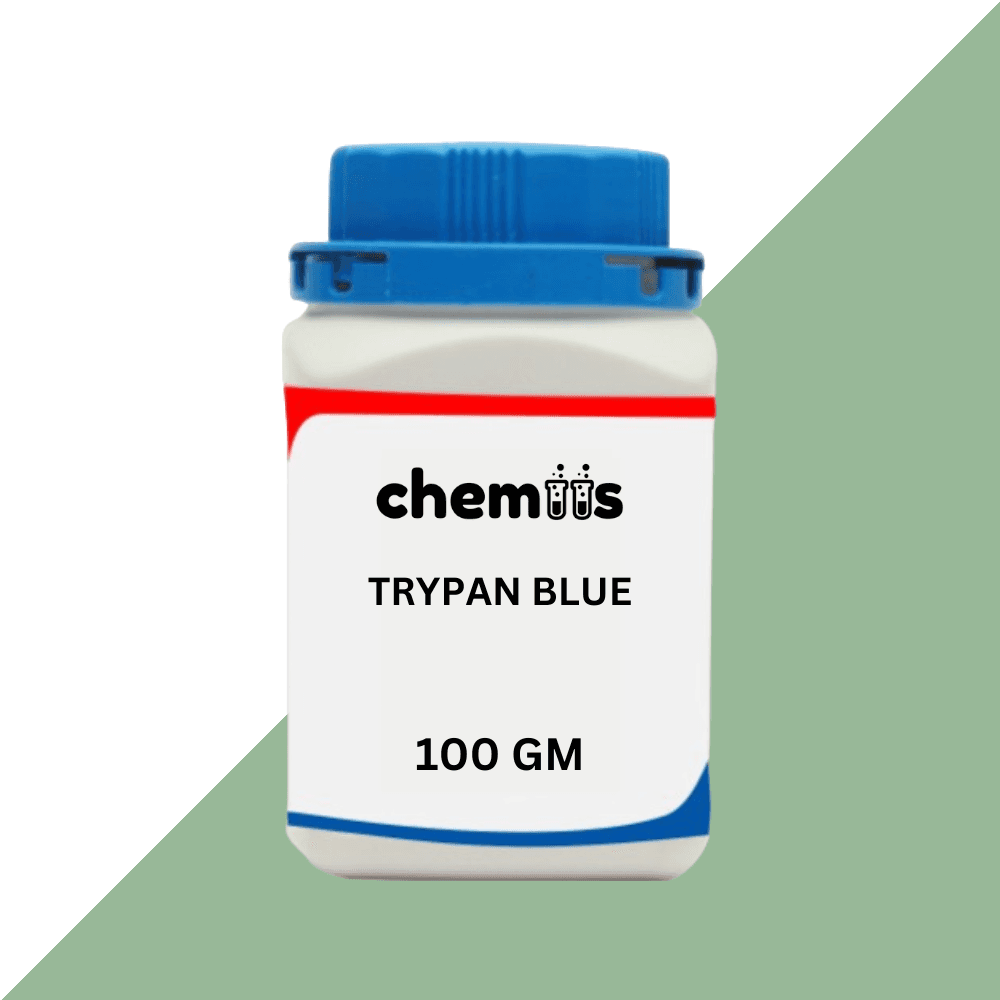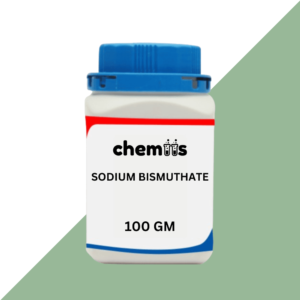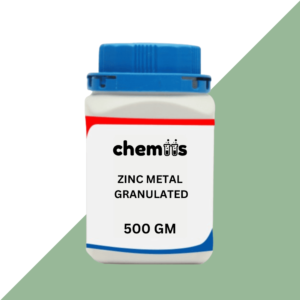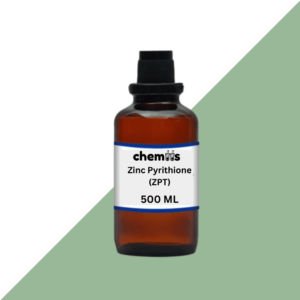Trypan Blue is a synthetic azo dye commonly used in biological and medical research for cell viability assays and histological staining. It is known for its selective staining of non-viable cells, making it indispensable in laboratories for evaluating cell integrity.
Applications of Trypan Blue
1. Cell Viability Assays
- Non-Viable Cell Staining:
Selectively stains dead cells due to its inability to penetrate live cell membranes, facilitating manual or automated cell counting. - Cell Counting in Research:
Widely used in conjunction with a hemocytometer to assess cell viability in culture.
2. Histological and Microscopic Staining
- Histological Studies:
Applied as a staining agent to study tissue structure and detect necrotic areas. - Macrophage Phagocytosis Studies:
Helps in visualizing cellular uptake processes during immunological research.
3. Medical Applications
- Ophthalmology:
Used in cataract surgeries to stain the anterior capsule, aiding in visualization. - Tumor and Necrosis Identification:
Assists in distinguishing necrotic tissues in experimental cancer research.
4. Biotechnology and Pharmaceutical Research
- Cytotoxicity Testing:
Evaluates the effects of drugs or other agents on cell viability. - Stem Cell Research:
Used for assessing stem cell health and functionality.
Safety Guidelines for Handling Trypan Blue
1. Hazards
- Health Risks:
- May cause irritation to the skin, eyes, and respiratory system.
- Prolonged exposure could have toxic effects on the liver and kidneys.
- Environmental Risks:
- Harmful to aquatic life; avoid direct discharge into water bodies.
2. Personal Protective Equipment (PPE)
- Gloves:
Wear nitrile or latex gloves to prevent skin contact. - Eye Protection:
Safety goggles are essential to avoid eye irritation. - Clothing:
Use a lab coat to minimize contact with skin. - Respiratory Protection:
Use a mask if working in poorly ventilated areas or with powder forms.
3. Handling and Storage
- Storage Conditions:
Keep in a tightly sealed container, stored at room temperature in a dry, well-ventilated area. Protect from light. - Handling Tips:
Avoid creating dust or aerosols. Handle in a chemical fume hood when necessary.
4. Spill and Leak Management
- Contain spills using inert absorbents like sand or vermiculite.
- Clean up immediately using appropriate PPE and dispose of waste according to local regulations.
5. First Aid Measures
- Skin Contact: Wash the affected area with soap and water. Seek medical advice if irritation persists.
- Eye Contact: Flush with water for at least 15 minutes and consult a physician.
- Inhalation: Move to fresh air. Seek medical assistance if symptoms like coughing or dizziness occur.
- Ingestion: Do not induce vomiting. Rinse mouth with water and seek immediate medical attention.
6. Fire Safety
- Fire Hazards:
Non-flammable under normal conditions but may emit toxic fumes if heated to decomposition. - Extinguishing Media:
Use water spray, carbon dioxide, or dry chemical extinguishers.








Sameer Patel (verified owner) –
Easy to communicate with.
Kavita Nair (verified owner) –
Good support for queries.
Rahul Verma (verified owner) –
Super smooth process.
Manju Devi (verified owner) –
Neatly delivered.
Riya Bhatt (verified owner) –
Fast and accurate delivery.
Simran Gill (verified owner) –
Super fast shipping.
Vishal Yadav (verified owner) –
Honest and transparent.
Ankur Tyagi (verified owner) –
Genuine products.
Ishaan Nayak (verified owner) –
Professional service.
Devika Pillai (verified owner) –
Just what I needed.